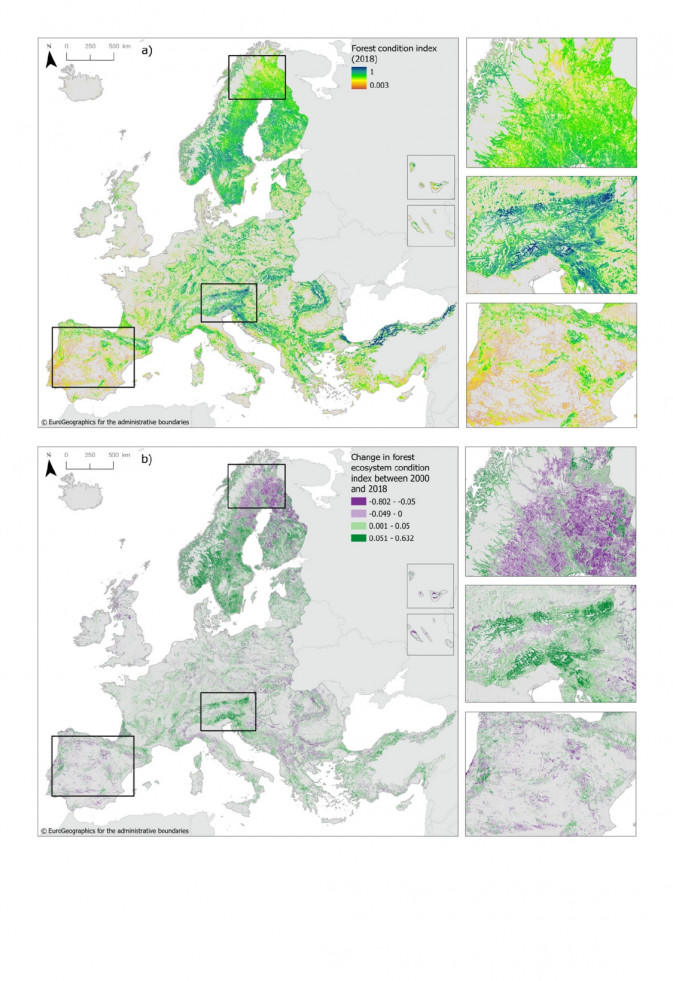SELINA-supported research paper provides an assessment of the condition of forest ecosystems in Europe
In June 2023, the first SELINA-supported research paper “Accounting for forest condition in Europe based on an international statistical standard” was published in the Nature Communications journal. It examines the condition of forest ecosystems, their crucial role in safeguarding biodiversity and mitigating climate change, and the threat forest degradation poses to key ecosystems and society.
The paper provides a spatially explicit assessment of the condition of forest ecosystems in Europe following a United Nations global statistical standard, the System of Environmental-Economic Accounting - Ecosystem Accounting (SEEA EA), adopted in March 2021. By applying a set of ecosystem accounting rules, the paper measures forest condition across 44 forest types for two different years, 2000 and 2018, on a scale from 0 to 1, where 0 represents a degraded ecosystem and 1 represents a reference condition based on primary or protected forests.
The analysis uses regularly updated datasets that describe water availability, soil organic carbon, the number of threatened forest birds, tree cover density, ecosystem productivity, forest connectivity and landscape naturalness.
The research team analysed the condition of 1,964,211 km2 of forest in Europe. The results showed that one-third of the forest area was subject to declining condition, signalled by a reduction in soil organic carbon, tree cover density and species richness of threatened birds. The findings also suggest that forest ecosystems will need further restoration, improvements in management and an extended period of recovery to approach natural conditions.
Read the full paper here.
Photo: Forest condition in Europe, 2000–2018. (a) Forest condition map for 2018. (b) Change in forest condition between 2000 and 2018. The distribution of the forest condition index by forest type is shown in Supplementary Fig. 1. Insets illustrate changes in Boreal forests, Mediterranean, and Alpine forests. Average forest condition inside the Boreal bounding box changed from 0.625 in 2000 to 0.605 in 2018, a decline of 2%, mainly driven by lower ecosystem productivity (NDVI) and lower soil organic carbon. Average forest condition inside the Alpine bounding box increased from 0.648 in 2000 to 0.682 in 2018, a growth of 3.4% as a result from increases in all condition variables. Average forest condition inside the bounding box covering the Iberian Peninsula decreased slightly from 0.515 in 2000 to 0.512 in 2018 following reductions in tree cover density.
